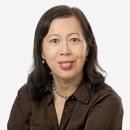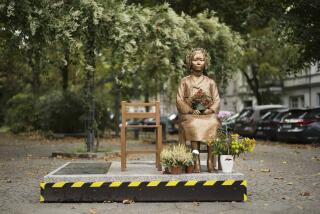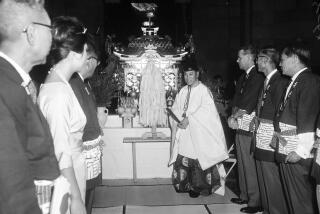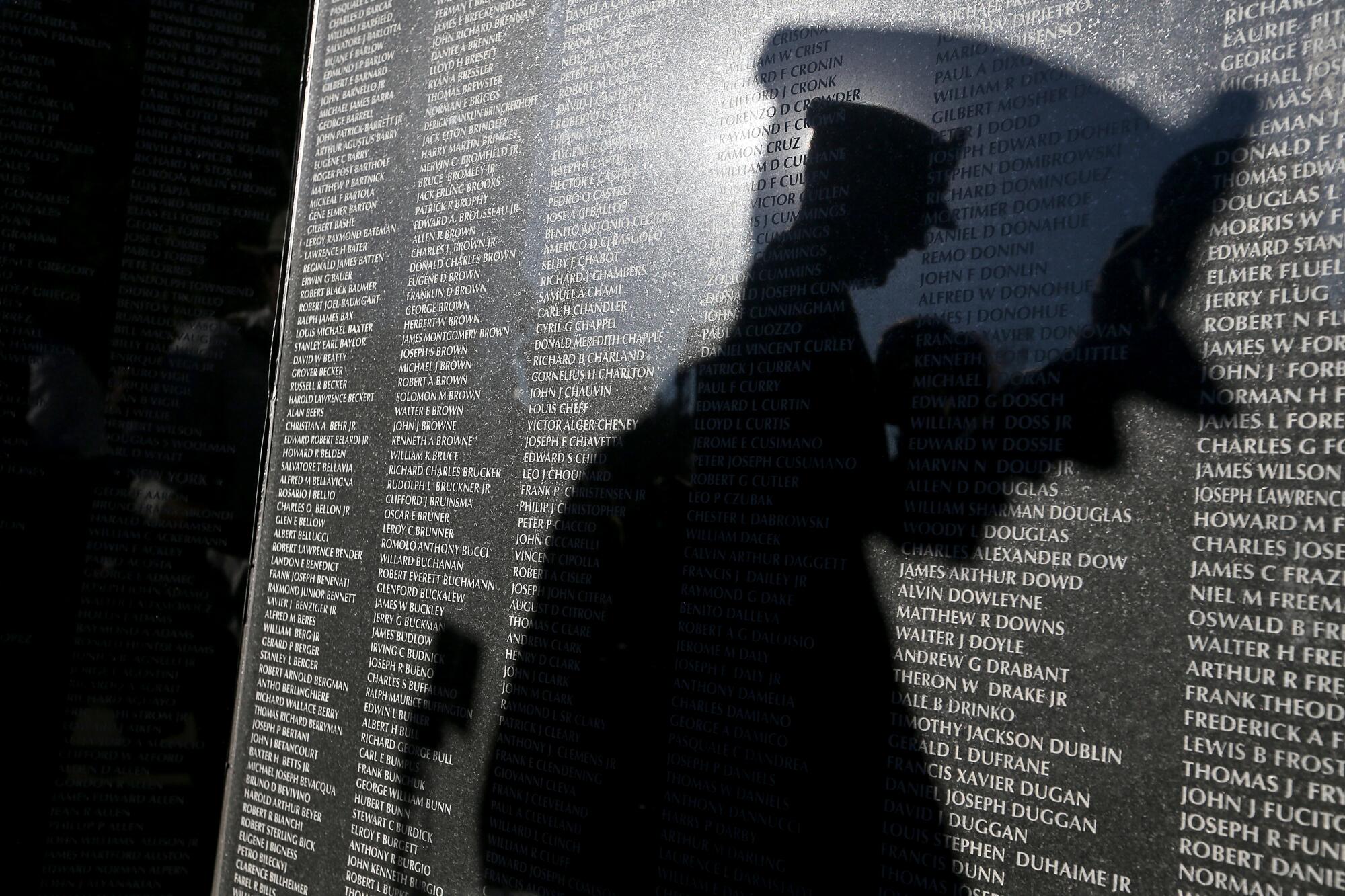
- Share via
As a boy in South Korea, Kiho Pai saw an American soldier standing outside of a military hospital, smoking.
The soldier, who had bandages wrapped around his head and looked to be in his teens, asked a question.
For the record:
5:28 p.m. Nov. 24, 2021An earlier version of this story said the Korean War memorial in Fullerton is the first on the West Coast. It is the first on the West Coast to include the names of all the more than 30,000 Americans who died in the war.
Pai, then 9 or 10, didn’t understand English but guessed the soldier’s intentions, holding up some fingers to indicate his own age.
As he grew older, Pai realized how much that soldier and other Americans had sacrificed, defending South Korea against North Korean and Chinese Communist forces.
Now 78, Pai gave more than $20,000 to build a Korean War memorial, which was unveiled last week on Veterans Day in Fullerton.
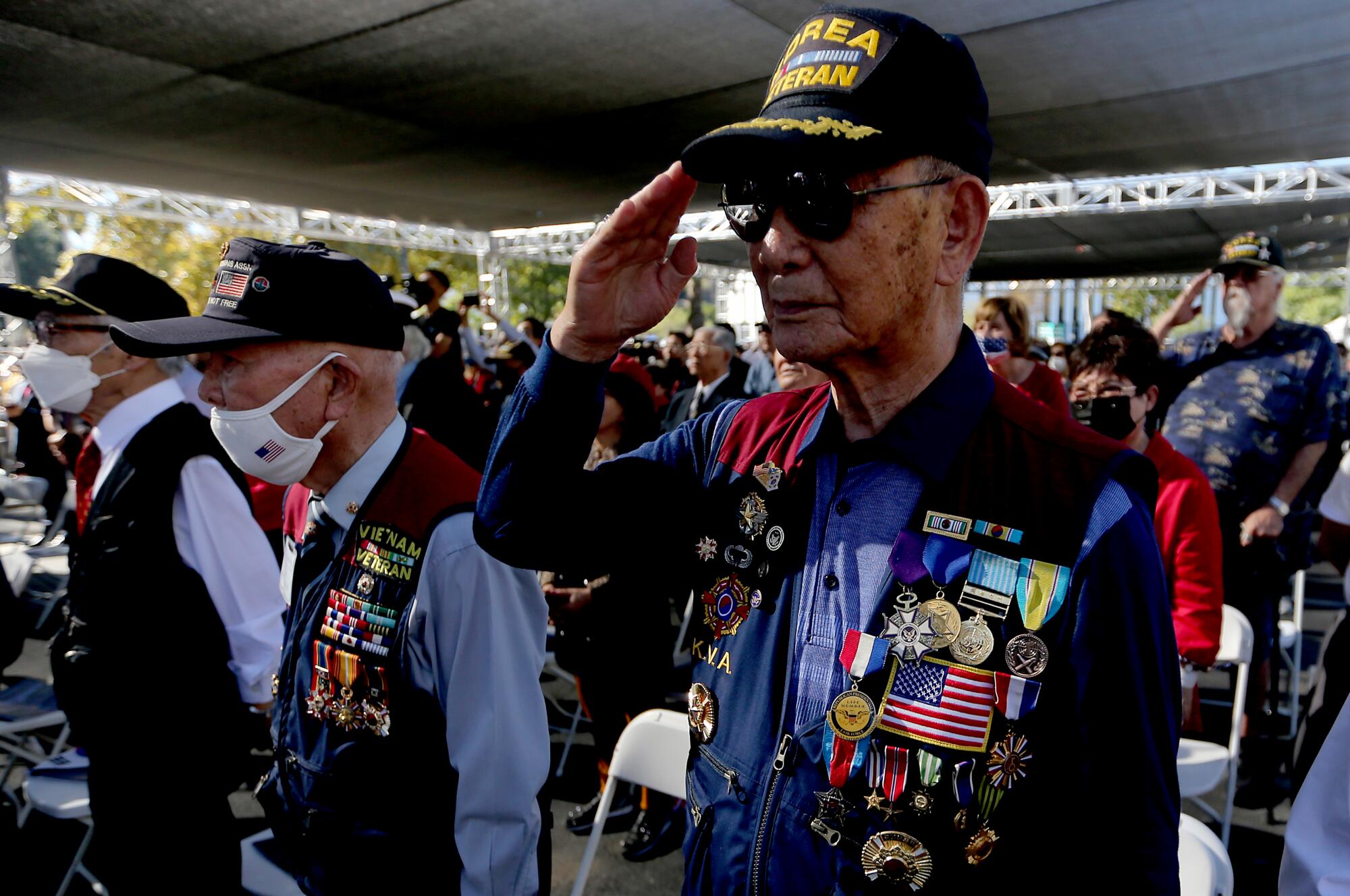
Thousands of other Koreans, from Seoul to Southern California, wrote checks toward the $1-million cost.
The Fullerton monument to the Korean War is the first to include the names of all 36,591 Americans who died in the war from 1950 to 1953.
In Washington, D.C., a memorial to what is sometimes called the “forgotten war” includes statues of 19 soldiers, a mural and a pool of remembrance.
But etching of the names is still in progress there, with a dedication ceremony scheduled for July 2022.
“Those sacrifices are a blessing to us, Korean people,” said Pai, who came to the U.S. in 1971 and worked as a pharmacist.
The monument, on Brea Boulevard in Hillcrest Park, is expected to draw veterans and their family members, as well as tourists from South Korea.
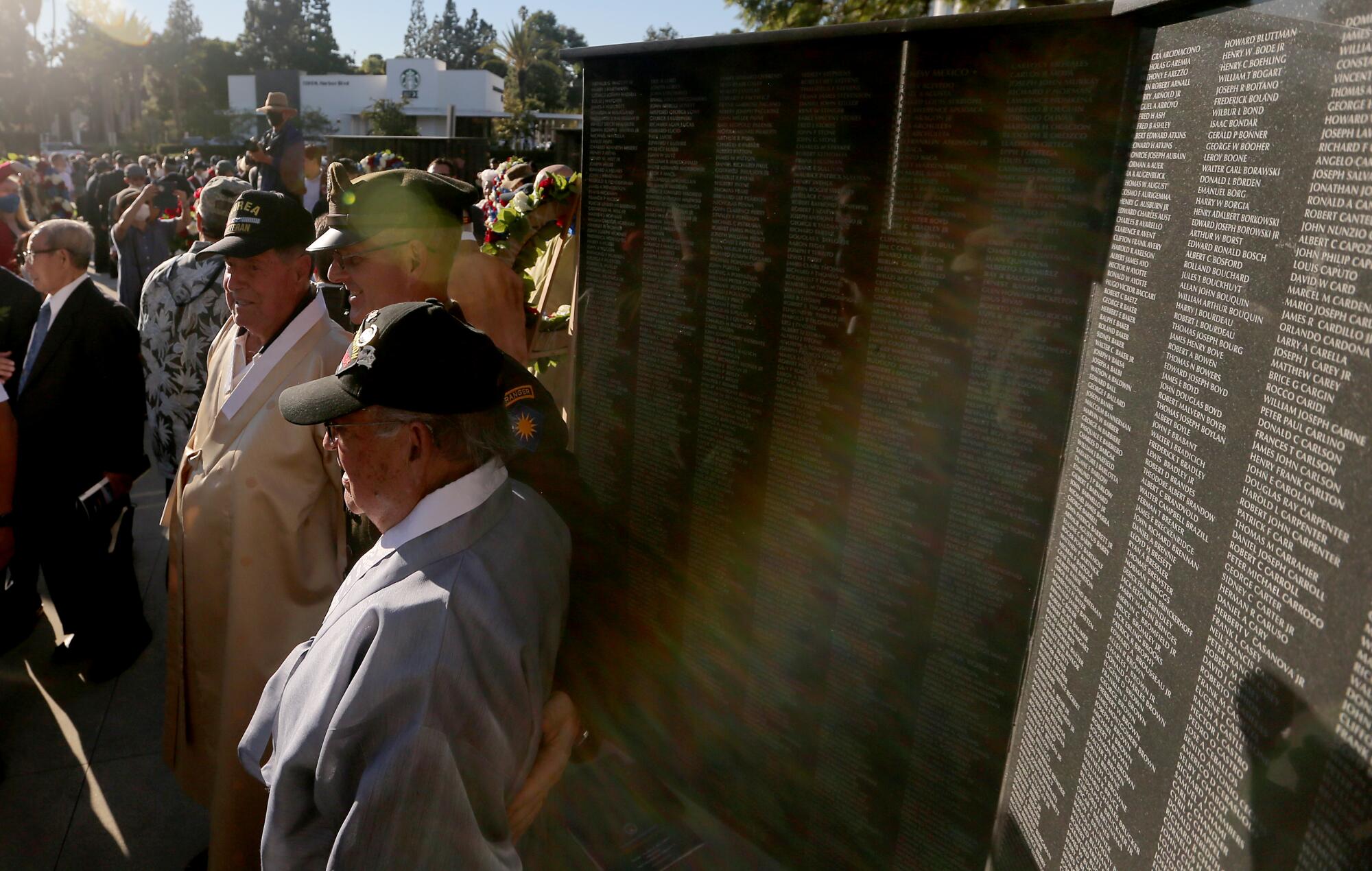
Five star-shaped granite blocks contain the names of the fallen, grouped by home state. Among them are 58 from Orange County and 2,612 from California, according to organizers.
The names were obtained from records at the United Nations Peace Memorial Hall in Busan, South Korea.
The American and South Korean flags fly overhead, along with the California flag and an emblem representing prisoners of war and service members missing in action.
“All of us have so much appreciation for these heroes who didn’t even know where Korea was on a map when they went to defend our country,” said Sukhee Kang, 68, former mayor of Irvine and senior advisor for the Korean War Memorial Committee, which raised money for the memorial and designed it.
The memorial, more than 10 years in the making, was the brainchild of Jin Oh Kim, a Korean American from Orange County who owned a wholesale shirt business.
Kim donated $200,000 in seed money and recruited support both locally and from South Korea.
With an estimated 600,000 residents of Korean descent, Southern California has the largest Korean population outside South Korea.
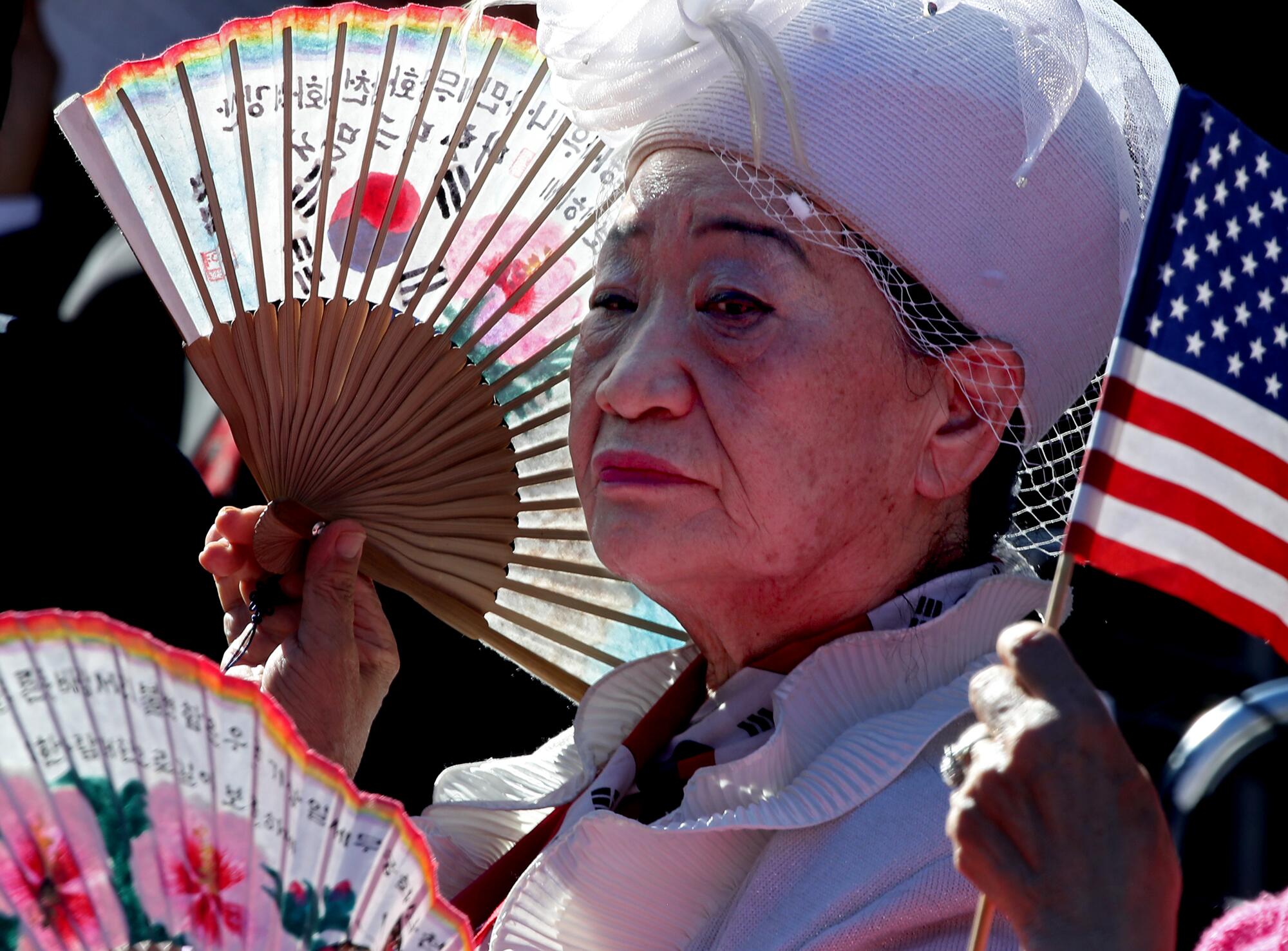
Kim died in 2016, but by then, other Korean Americans were committed to making the memorial a reality.
Finding a site was a hurdle. They were rebuffed or ignored by Brea, Buena Park, Garden Grove, Irvine, La Palma, Los Angeles and others.
“We were asking for a special spot, but none of those cities would give up their parks,” recalled Dongwoo Joseph Pak, 69, secretary general of the memorial committee. “They thought the project would be too big or too hard. Yet we could not walk away from this dream. This war has been known as the ‘forgotten war,’ and that’s exactly why we didn’t give up.”
In 2012, Pak began working as a field representative for state Assemblywoman Sharon Quirk-Silva (D-Fullerton).
Quirk-Silva, a former Fullerton mayor, suggested her hometown.
City leaders had doubts. Some locals didn’t want the memorial at a prominent corner of Brea and Harbor boulevards, once occupied by a popular duck pond. Vandalism was a concern.
But the memorial’s boosters promised funds for maintenance and security.
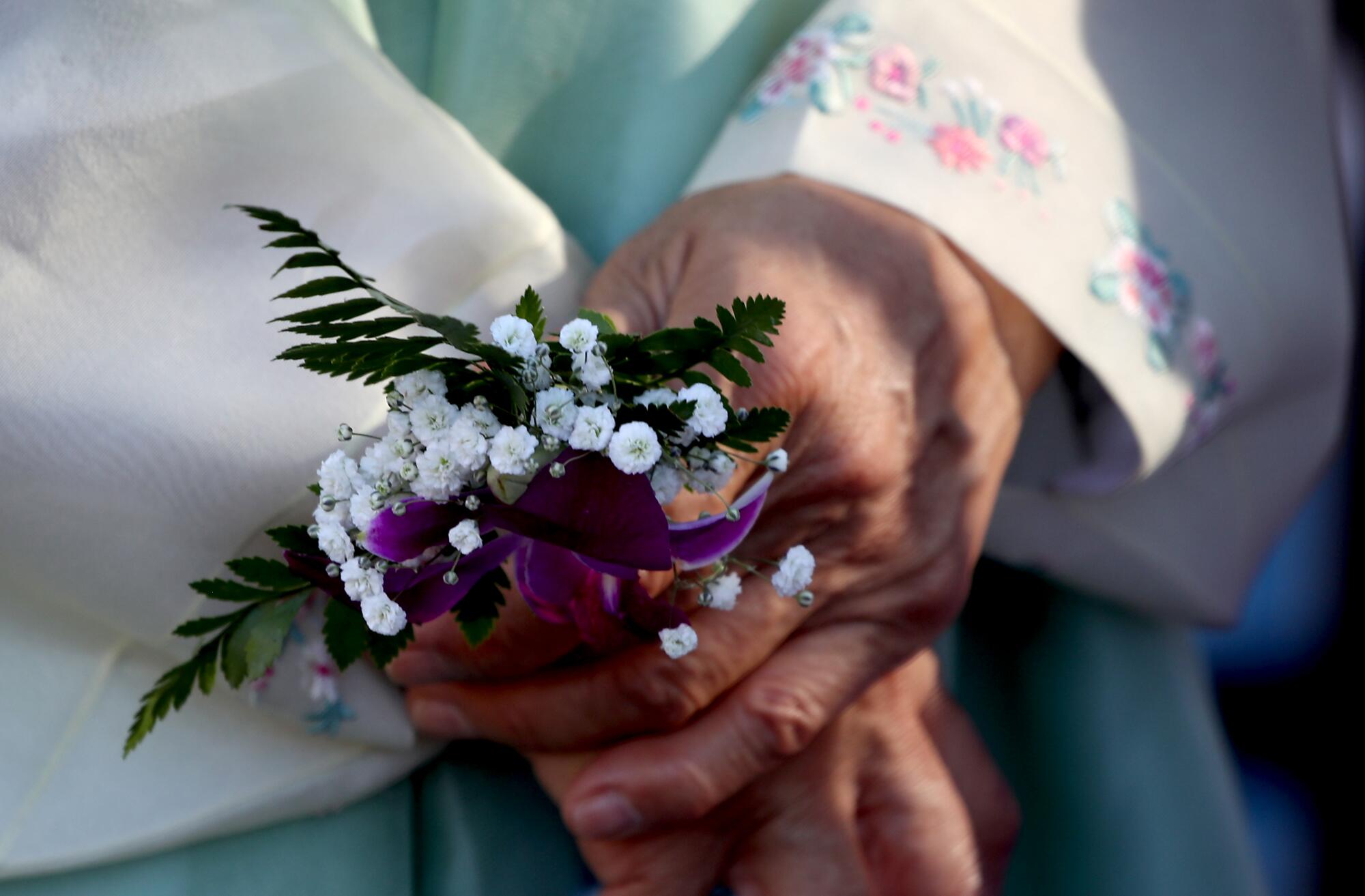
And there were Fullerton’s many Korean American residents, some of whom settled there after the 1992 Los Angeles riots.
Nearly a quarter of the city’s more than 138,000 residents are of Asian descent, with an estimated 18,000 Korean Americans, according to Fullerton Mayor Bruce Whitaker.
“It’s simply beautiful and meaningful looking at the rows of names and reflecting on the bravery of the men and women,” Whitaker said.
Fundraising for the memorial was a transpacific effort.
Organizers, including memorial committee President James Ro, helped to select eight people to lead a campaign in South Korea.
Through its Ministry of Veteran Affairs, the South Korean government donated $240,000.
And South Koreans like Jian Ra, 13, gave.
Ra’s grandfather was a leader of the fundraising campaign, and after researching the Korean War, Ra donated $5,000 from her savings.
As donations slowed last year during the COVID-19 pandemic, Pak approached the South Korean consulate in Los Angeles.
The consulate agreed to issue a plaque of appreciation to people who gave $1,000 or more.
Their photos would be published in a Korean language newspaper, putting their generosity on display for the whole community.
Building the monument is “the honorable thing to do,” said Kyung Jae Park, South Korea’s consul general in Los Angeles.
Park expects that South Koreans visiting California will stop by the memorial in between Disneyland and spending time with relatives.
“They will also bring their children here to learn an important lesson,” Park said.
Yuna Lee, a junior at Sonora High School in La Habra, hopes the memorial will educate her peers about the Korean War.
“The people who died are very close to our age, yet I was shocked that many youths did not even learn about the war,” she said.
For military members and veterans, the memorial is a reminder of their colleagues’ sacrifice.
“Behind every name, there’s not just a story of how they died. There’s a story of what they left behind,” said Brig. Gen. Robert T. Wooldridge, deputy commanding general of the Army’s 40th Infantry Division.
More than 300 of the fallen etched on the memorial were members of Wooldridge’s unit.
They include Cpl. Clifton Speicher, who died defending his squad against mortar and machine-gun attacks near Minarigol in 1952.
Another member of the 40th, Sgt. Gilbert Collier, ran out of ammunition near Tutayon in 1953. He died after killing enemy soldiers in hand-to-hand combat and rescuing his commanding officer.
Both men received the U.S. military’s highest award for valor, the Medal of Honor.
The youngest surviving Korean War veterans are in their 80s. They have spent their lives reminding people of the conflict that was overshadowed in the American consciousness by Vietnam.
“That memorial means the world to me,” said Roman Morales, 91, of Covina, a veteran of the 40th Infantry Division.
The former Army mechanic comes from a family of five brothers, all of whom served in the military.
Morales, who was 22 when he went to Korea, has posed for photos in front of the memorial and shared them on Facebook with friends and fellow veterans as well as the relatives of long-gone soldiers he fought with.
He has visited South Korea three times, at the invitation of Korean civic and church groups who “treated us like royalty.”
“We did not know where we were going. We did not know the Korean people, who are incredible people,” Morales said. “We just knew we had important jobs to do.”
More to Read
Sign up for Essential California
The most important California stories and recommendations in your inbox every morning.
You may occasionally receive promotional content from the Los Angeles Times.
